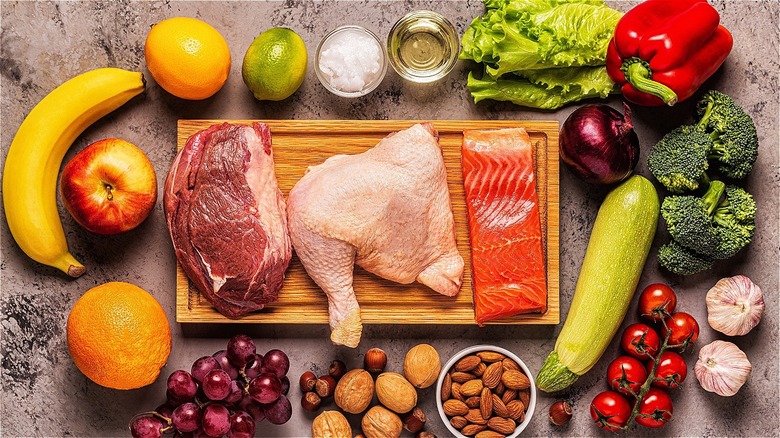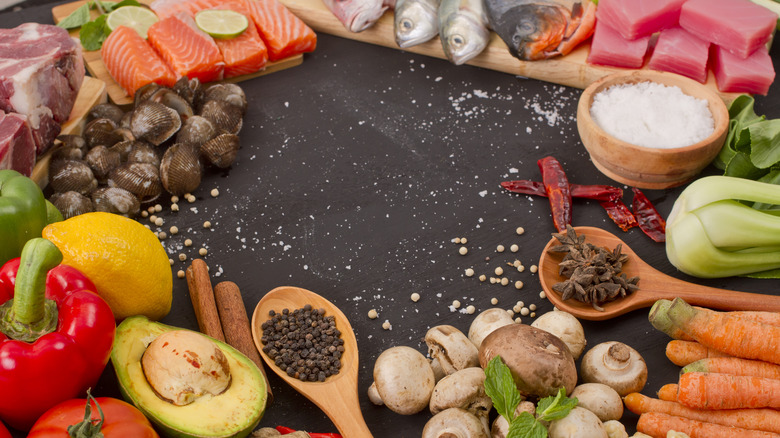Everything You Need To Know About The Pegan Diet
Question: What do you get when crossing a paleo with a vegan diet? Answer: A pegan diet. It is understandable if you've not heard of this eating trend. Unlike vegetarianism, which is as old as the hills (its earliest appearance is in the writings of Pythagoras in 500 BC), and veganism, its austere relative that was formulated in 1944, per Time, the advent of peganism is somewhat more recent and perhaps not as widely practiced.
The vegan diet is a highly restrictive eating plan and it is touted as being healthy in numerous aspects. However, Web MD explains that by cutting out meat products, the vegan diet lacks protein, calcium, Omega 3 fatty acids, vitamin D, and vitamin B12. A lack of hemoglobin, hormone disruptions, fatigue, and orthorexia (a disruptive eating disorder) are potential consequences of this, per Well Versed.
The paleo diet, on the other hand, (which is not as stringent) was invented in the 1970s by gastroenterologist Walter Voegtlin, notes History. It is a diet that hearkens to the foods of humans in the paleolithic age. As you might imagine, the food of that period was basic, wild, and pure, due to the lack of technology and, consequently, it was void of manipulation. According to the Mayo Clinic, this diet is better for the human body's genetic make-up since it's free from preservatives and other harmful additives.
A combination of Paleo and vegan
The pegan diet requires that 75% of your nutritional intake is plant-based and only 25% of products from animals that are raised naturally, pastured and grain-fed, and unprocessed, states Cleveland Clinic. Further simplified, it requires the dieter to eat a minimum of five cups of vegetables, four servings of carbohydrates, three proteins, two fats, and a dairy substitute daily, per Womens' Health Magazine.
Things that are prohibited in the pegan diet are beer, milk, and starchy vegetables with a high glycemic index. Beans, peas, and lentils, which are important protein sources for vegans, are not required in the pegan food regimen. Some believe, per Women's Health Magazine, gluten has no place in the pegan diet, but Dr. Hyman (via Forbes) states that not everything gluten-free is healthy. The restriction on grain foods deprives the body of fiber that is essential for the body's continued health. The necessary fats for the body come from unprocessed sources like olive oil, nuts, avocados, olives, and seeds (if rendered in the form of an oil that needs minimal processing), per WebMD.
Dr. Hyman, the physician and author credited with the pegan concept, sought after and created a middle ground between two extremes to form a diet that is more sustainable. As such, the paleo diet meets the vegan diet halfway, to form the pegan diet.

